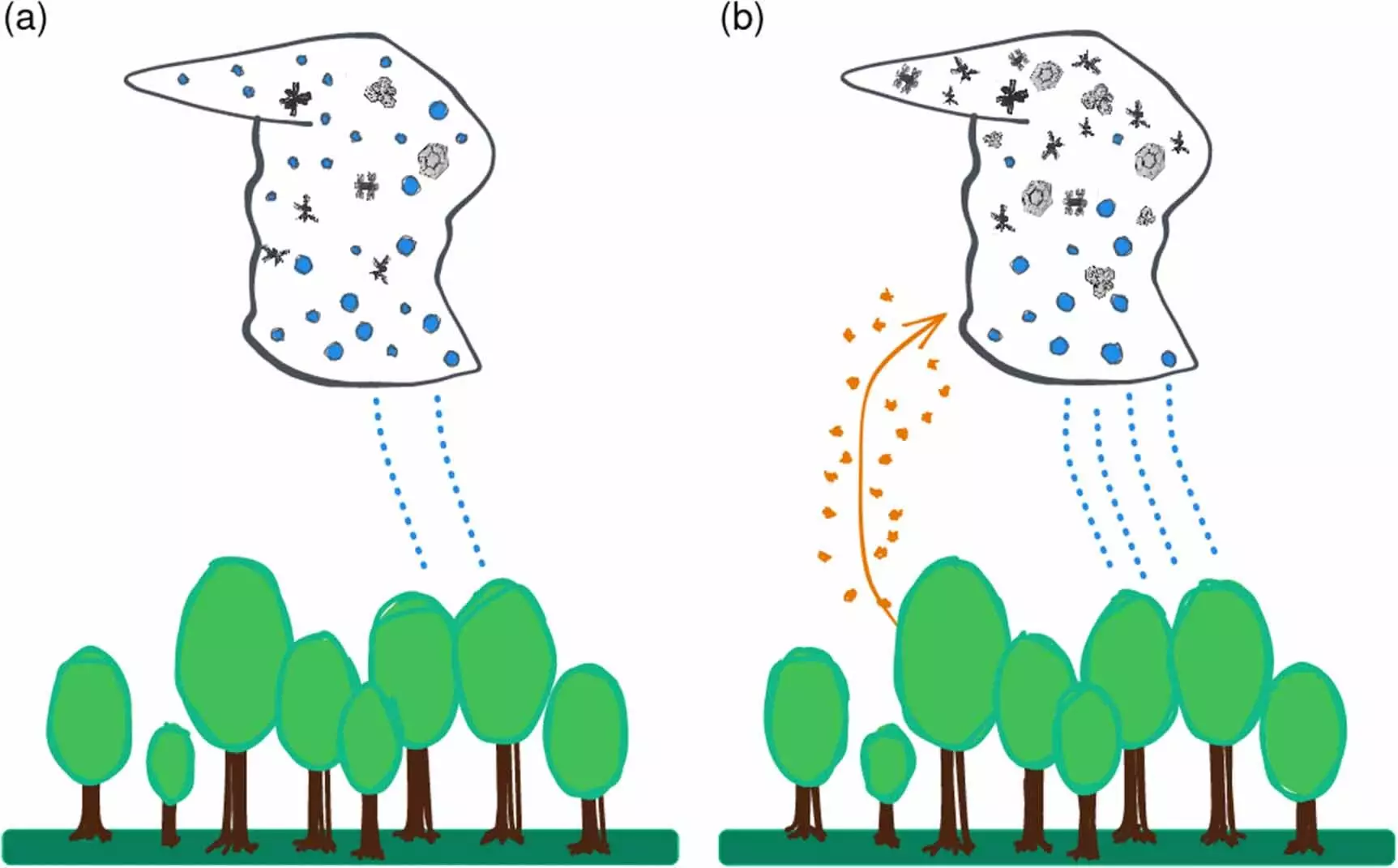The interplay between vegetation and meteorological phenomena is gaining increasing attention in contemporary climate science. A recent investigation, emerging from the collaborative efforts of meteorologists and biodiversity researchers, has revealed that rising pollen concentrations in the spring are linked to increased precipitation and cloud ice formation, even at remarkably low temperatures, ranging from minus 15 to minus 25 degrees Celsius. This study, led by Dr. Jan Kretzschmar and published in Environmental Research Letters, emphasizes the crucial role that natural particulates like pollen play in weather dynamics.
Traditionally, the freezing process in clouds typically requires temperatures to plummet below minus 38 degrees Celsius. However, this research illustrates that pollen serves as an excellent ice nucleus. In simpler terms, pollen grains can catalyze the transformation of supercooled water droplets into ice crystals, thereby enhancing precipitation. The study draws on both ground-based observations and satellite data, incorporating rigorous laboratory results that demonstrate the propensity of pollen to disrupt the usual freezing point of water in clouds.
As climate change continues to reshape ecosystems, one of the outcomes is a clear alteration in pollen production and behavior. The findings indicate that human-induced climate change is not only influencing the timing of the pollen season but also extending its duration and increasing the concentrations of pollen in the atmosphere. Such changes are regarded as critical when considering their potential implications for regional precipitation patterns.
Dr. Kretzschmar’s insights demonstrate this dynamic well; in spring, a significant amount of pollen is released into the atmosphere, where it then interacts with cold air masses. Yet, it is not just the whole pollen grains that warrant attention, but notably, smaller fragments produced during the breakdown of pollen grains under humid conditions. These smaller particles have a longer atmospheric residence time and, when abundant, can reach higher altitudes where ice formation occurs.
Another layer of complexity in this narrative is the relevance of biodiversity. A multitude of plant species releases pollen synchronously during the spring months, thereby influencing cloud formation and the distribution of ice particles in the atmosphere. This seasonal synergy underlines the need for broader investigations into how various ecological interactions contribute to climate dynamics.
While the global impact of pollen on ice formation may be considered minor when juxtaposed with larger atmospheric particles like dust, its significance becomes pronounced within specific regional and seasonal contexts. Understanding these interactions is paramount not only for refining existing climate models but also for grasping how shifting biodiversity patterns due to climate change will further influence weather systems.
As indicated by Professor Johannes Quaas, a co-author of the study, the complexity of these interactions signals a demand for further research. The modeling of pollen’s effect on atmospheric processes is essential for enhancing predictive accuracy regarding precipitation trends influenced by both climate variability and biological factors. By creating comprehensive simulations that effectively incorporate pollen dynamics, scientists can refine forecasts for future weather patterns.
Contributing institutions such as the Institute for Meteorology at Leipzig University, the Leibniz Institute for Tropospheric Research (TROPOS), and the Max Planck Institute for Biogeochemistry lend credibility to the study, applying multidisciplinary methods to an increasingly intricate subject matter. Their collaborative work advocates for a deeper understanding of how flora influences climatic conditions, thereby setting a precedent for exploring the interconnectedness of life and climate.
The discovery that pollen not only contributes to atmospheric change but also plays a pivotal role in precipitation patterns unveils a previously understated facet of climate science. The interplay between climate change, biodiversity, and meteorological phenomena underscores the urgency of addressing these complex interactions. By doing so, the scientific community can present a more holistic view of climate evolution—one where every component in our ecosystem is integral to predicting and understanding future weather patterns.



Leave a Reply